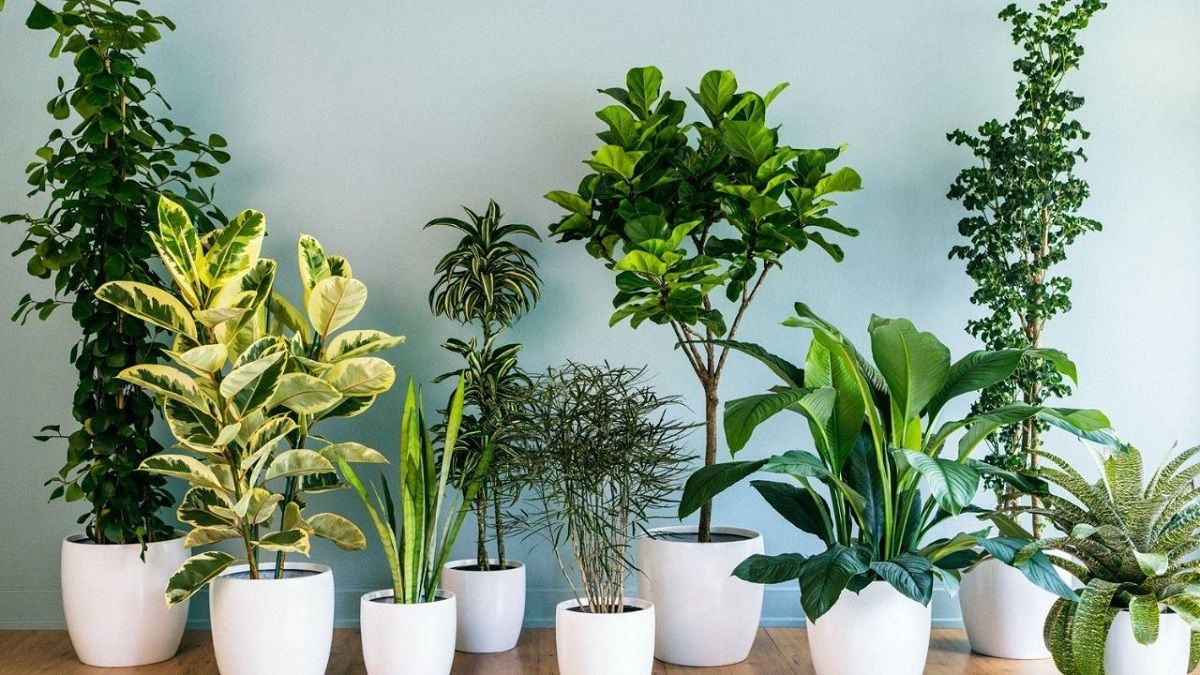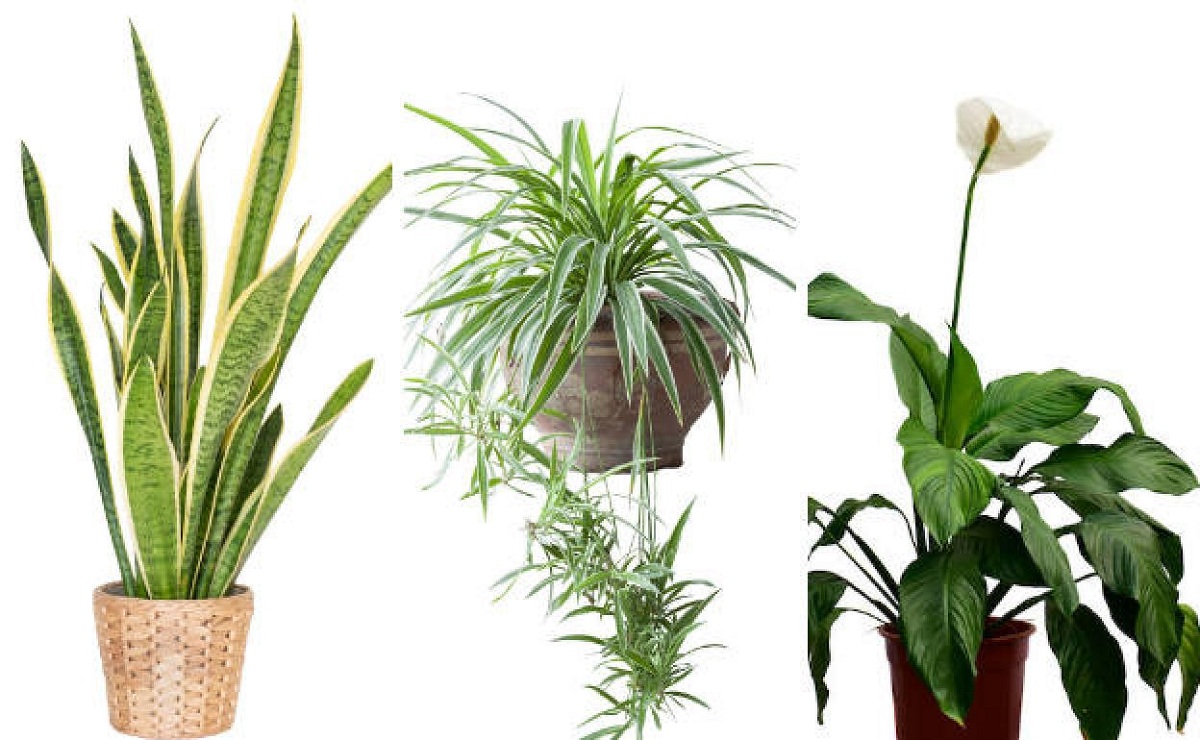
The air in our homes and workplaces is getting worse. It is our lifestyle that has led to an increasing number of chemically synthesized products in our homes that release concentrations of volatile organic compounds that are harmful to health. The most frequent are: formaldehyde, trichlorethylene, benzene, xylene, toluene, carbon dioxide and ammonia, some of them with proven carcinogenic effects. In order to deal with this situation, there are different plants that purify the air.
In this article we are going to tell you which are the main plants that purify the air and how they can benefit you.
Benefits of plants that purify the air

Plants have many benefits in the home. In addition to acting as natural air fresheners in some cases, they also they reduce noise, improve mood and purify the environment. Remember that during photosynthesis, plants take carbon dioxide from the environment and convert it into oxygen, which is necessary for human respiration.
Some of them are more useful than others when it comes to purifying the environment and filtering out pollutants. NASA conducted a scientific study in the late 1980s, the NASA Clean Air Study, to determine which ones were most effective in this regard. The researchers did a list of 20 purifying plants that are especially useful for cleaning the air in closed spaces.
The lead author of the study, Bill Wolverton, is an American scientist specializing in chemistry, microbiology, biochemistry, and environmental engineering. He determined that five of these plants were the best for availability and effectiveness. The list explained by Wolverton in different media is still valid and interestingly, these plants can remove harmful substances from the air such as formaldehyde, benzene, chili, carbon monoxide or trichloroethyl.
plants that purify the air

Spatiphilian
It is one of the most purifying plants and one of the easiest to maintain. Putting this plant in our home reduces volatile organic compounds such as formaldehyde, xylene and toluene, which are harmful to health, and it is also effective in removing acetone, trichloroethylene and benzene.
Native to the tropical forests of Central and South America, it needs a spot with indirect light, and although it likes humidity, it is rarely watered, and a bathroom with natural light is an ideal place for this plant.
areca palm
One of the best air purification plants in general. It is known for indoor use. This palm tree is easily seen in Victorian decorations and in period movies. The reason is that it lives happily indoors without the need for direct sunlight. Plus, there is very little care needed to keep it in top condition. This palm tree is native to Madagascar. But today it is all over the world. Las Palmas specializes in the removal of formaldehyde, benzene, and carbon monoxide (especially helpful if someone in your home smokes).
tiger tongue
It is used to absorb nitrogen oxides and formaldehyde. It is one of the most resistant houseplants that exist. Known as indestructible. It has withstood the hot, dry environment of a room, dim lighting, neglected watering, years without repotting, pests and diseases, just about anything.
pothos
It is the easiest to maintain. It has heart-shaped golden leaves and is popular in North America. It is a hardy plant can survive in low light and cooler temperatures, making it ideal for offices and homes as it releases carbon monoxide and formaldehyde into the air. It is very hardy and grows quickly. At home, it prefers bright indirect light and moist soil. Perfect for bathroom or kitchen.
Tape
Eliminates carbon monoxide and other toxins and impurities. It is one of the top three plants for removing formaldehyde from the air. It is easy to care for and the right temperature, watering and light, your plants will live for many years.
It tolerates low light and cold well. They withstand drought and will not die if they forget to water because they store water in their roots.
robust ficus
It is an evergreen species of the genus Ficus native to northeastern India (Assam), southern Indonesia (Sumatra and Java). It was introduced to Europe in 1815 as a houseplant. One of the easiest to maintain. Putting this plant in our home reduces formaldehyde, a volatile organic compound that is harmful to health.
chinese palm tree

Raphis excelsa is an elegant potted palm that is easy to care for and does not require much light. Raphis excelsa, also known as Chinese golden needle grass, It has dozens of varieties with a height of one and a half meters. Reduces formaldehyde and benzene, volatile organic compounds harmful to health.
Trunk of Brazil
Its scientific name is Dracaena and it belongs to the agave family. It comes from tropical America and is an evergreen shrub. It is characterized by a light brown stem containing horizontal rings. The leaves are hanging, lance-shaped, and stand out for their bright green color and the yellow stripes that run through them.
These flowers germinate only in adult specimens that reach a certain height (usually two meters) and stand out for their intoxicating aroma. It tends to bloom infrequently and reduces volatile organic compounds such as trichlorethylene and xylene, which are harmful to health.
English ivy
It is a typical climbing plant that can rise several meters above the ground and can climb almost any type of surface, such as trees, rocks, walls. The collection of leaves and stems can be done at any time of the year, although it is better to do it before flowering. Reduces volatile organic compounds harmful to health, such as formaldehyde, trichloroethylene and benzene. This vine is more difficult to grow, prefers cold and humidity, and can be kept in pots on the balcony.
Bamboo palm tree
Acts as a natural humidifier. It is a plant native to China and has been cultivated throughout the world. Currently it can be used as part of the decoration of houses, gardens and patios. Due to its unique characteristics, it is a plant that requires minimal maintenance.
Removes benzene, formaldehyde and trichlorethylene. This very popular houseplant thrives in low light conditions and doesn't require much watering, making it perfect for those who often forget to water their plants.
I hope that with this information you can learn more about plants that purify the air and their advantages.